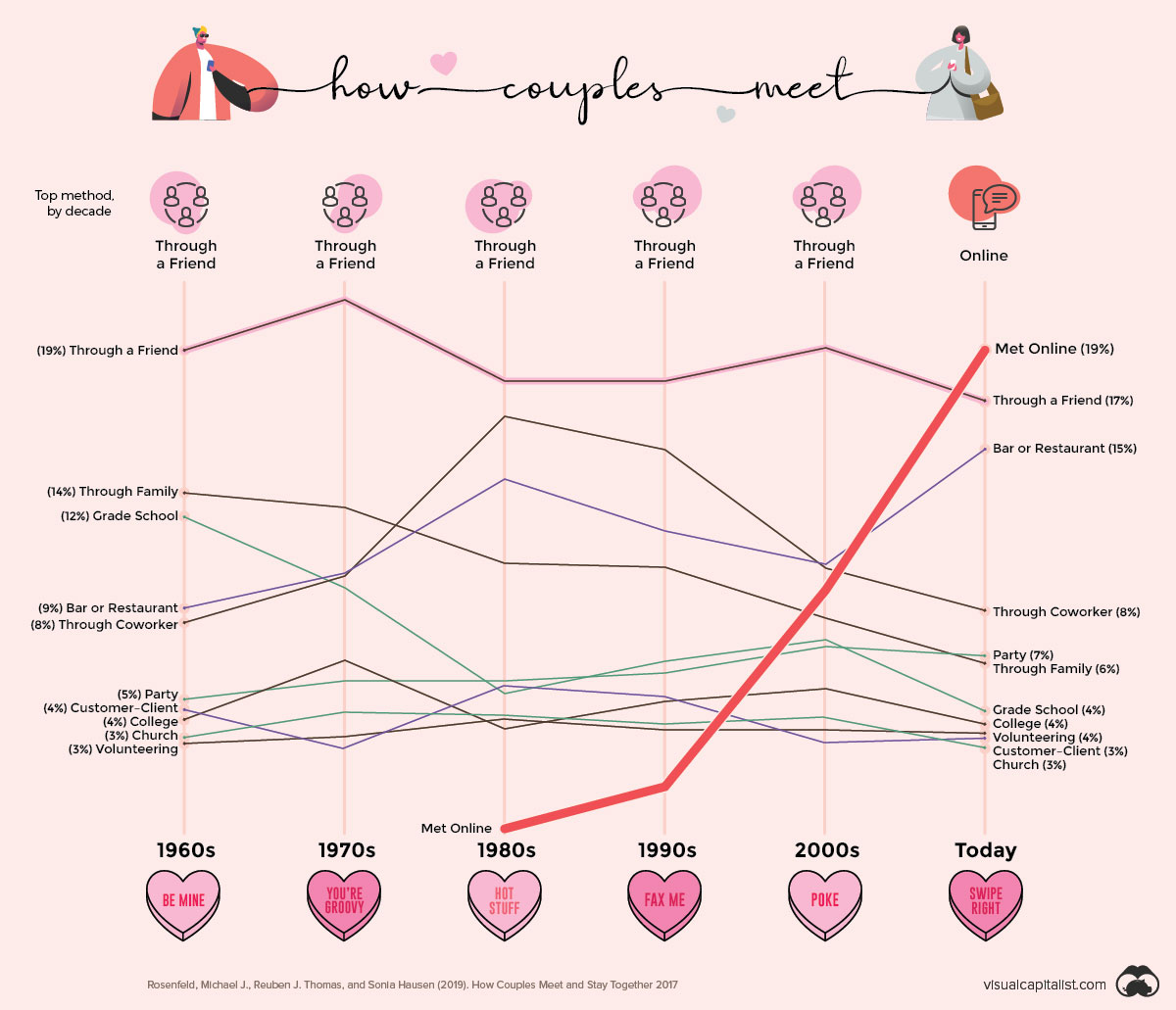
Background of Slow Dating
Definition of Slow Dating
Slow dating is an intentional approach to dating that emphasizes quality over speed. Unlike traditional dating, which often focuses on quick matches and fast-paced encounters, slow dating encourages individuals to take their time to build meaningful connections. The goal is to foster deeper understanding and relationships rather than rushing into superficial encounters.
History of Slow Dating
The concept of slow dating has its roots in the broader movement toward mindfulness and intentional living that gained traction in the early 21st century. As people began to prioritize emotional well-being and depth in their relationships, the dating world started to shift in response. Key milestones in this evolution include:
- The Rise of Online Dating: Early 2000s saw a surge in dating apps, which often promoted quick matches.
- Emergence of Slow Food Movement: This cultural shift toward savoring experiences inspired similar trends in dating, emphasizing patience and thoughtful connections.
Through the years, slow dating has resonated with those who seek a more profound relational experience, leading to a more deliberate dating culture encouraged by modern lifestyle changes.

Factors Driving the Popularity of Slow Dating
Modern Dating Challenges
Navigating the complex world of modern dating can often feel overwhelming. Many individuals report experiencing “dating fatigue,” where the pressure to constantly match and meet new people can become exhausting. This has prompted a search for more fulfilling approaches, leading to the rise of slow dating.
Shift Towards Meaningful Connections
As individuals seek deeper, more authentic relationships, there is a growing emphasis on quality over quantity. People are realizing the value of investing time in fewer connections that are likely to blossom into something significant. Slow dating appeals to those craving genuine emotional bonds.
Impact of Technology on Dating Culture
Ironically, technology, while facilitating connections through apps, has also contributed to a superficial dating culture. Many users feel overwhelmed by endless options leading to choice paralysis. Slowly, people are gravitating towards methods that foster deeper interactions, illustrating the need for a more thoughtful dating experience amidst the digital chaos.

Benefits of Slow Dating
Building Genuine Connections
One of the most significant benefits of slow dating is the opportunity to cultivate authentic relationships. By taking the time to truly get to know someone, individuals can foster genuine connections that go beyond surface-level traits. This leads to:
- Deeper Conversations: Engaging in meaningful discussions allows both parties to share values, beliefs, and interests.
- Shared Experiences: Spending time together at a relaxed pace helps build a foundation based on shared history.
Understanding Compatibility
Slow dating provides a richer perspective on compatibility. Rather than making snap judgments, individuals can assess compatibility over time, considering aspects like communication styles, life goals, and emotional needs. This gradual approach can reveal whether the relationship is worth pursuing long-term.
Reducing Dating Stress and Burnout
Lastly, slow dating significantly alleviates the pressure often associated with modern dating. By eliminating the need for rapid results, individuals can focus on enjoying the process of getting to know someone, which helps minimize anxiety and emotional exhaustion. This more mindful approach allows for a healthier, more enjoyable dating experience, ultimately leading to lasting connections.

How to Practice Slow Dating
Setting Clear Intentions
To fully embrace slow dating, it’s essential to set clear intentions right from the start. This means reflecting on what you truly seek in a relationship. Consider questions like:
- What are your long-term goals?
- What qualities are most important to you in a partner?
By establishing your intentions, you can approach dating with purpose rather than just casual encounters.
Prioritizing Quality Over Quantity
In slow dating, focusing on fewer, more meaningful connections is key. Instead of going on multiple dates within a week, try to limit yourself to just one or two significant dates, allowing for deeper exploration. This approach enables you to invest time and energy into getting to know someone, rather than spreading yourself thin.
Communication and Transparency
Lastly, open communication is vital in slow dating. Practicing transparency with potential partners regarding your intentions helps set the tone for the relationship. Share your thoughts, feelings, and expectations to foster trust and understanding. This honesty ensures both parties are on the same page, paving the way for a more enriching experience as you navigate the path to a meaningful relationship together.

Success Stories of Slow Dating
Real-life Experiences
Many individuals have found great success with slow dating, transforming their approach to relationships. For instance, Sarah, a 32-year-old marketing professional, shared how she met her partner through a slow dating event. By spending hours discussing their life goals and values, they found a deep connection that blossomed into a loving relationship.
- Connection Over Convenience: Sarah emphasized how slowing down allowed them to truly understand each other.
Testimonials from Slow Dating Advocates
Advocates for slow dating often highlight its life-changing benefits. Mark, a dating coach, notes, “Slow dating is about creating a meaningful narrative rather than a series of fleeting moments.”
- Empowering Journey: Many participants feel empowered, stating that the approach significantly reduces anxiety and stress compared to rapid dating styles.
Such real-life stories emphasize that the results of slow dating can lead to fulfilling, lasting relationships, proving that taking the time to truly connect pays off in the long run.

Challenges and Criticisms of Slow Dating
Potential Misinterpretations
While the slow dating approach has its benefits, it can sometimes be misinterpreted. Some may confuse “slow” with “inactive,” leading to frustrations about perceived lack of commitment. For instance, Jessica shared that her partner initially thought she wasn’t interested because she preferred longer dates rather than frequent ones.
- Clarifying Intentions: Addressing these misunderstandings upfront can help set clear expectations for both parties.
Balancing Pace with Expectations
Finding the right balance between pacing and personal expectations can be challenging. Although slow dating encourages patience, some individuals may feel pressured by societal norms that glorify quick results.
- Navigating Emotions: It’s common for feelings to evolve at different rates, making open communication essential. Sharing emotional progress can alleviate concerns and help partners stay aligned.
Understanding these challenges can enhance the slow dating experience, ensuring it remains a fulfilling journey towards meaningful connections.

The Future of Slow Dating
Trend Forecast
As the dating landscape continues to evolve, slow dating is expected to gain more traction. With growing awareness around mental health and well-being, people are increasingly prioritizing emotional connections over quick matches.
- Shift in Values: Experts predict that more singles will seek meaningful relationships, making slow dating an appealing option.
- Emergence of Events: Look out for more slow dating events focused on relationship-building rather than rapid matchmaking.
Integration into Mainstream Dating Culture
The principles of slow dating are gradually permeating mainstream dating culture. Many apps and platforms are now prioritizing compatibility over quantity, offering features that encourage users to engage deeply with fewer matches.
- Enhanced Features: Dating apps may include prompts to facilitate deeper conversations, fostering genuine connections.
As these shifts unfold, slow dating is poised to redefine how people connect, making it a respected alternative in the dating world.
